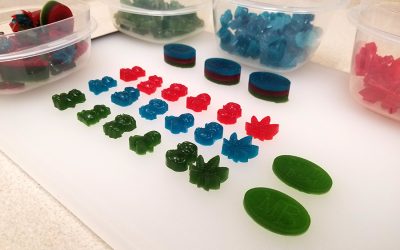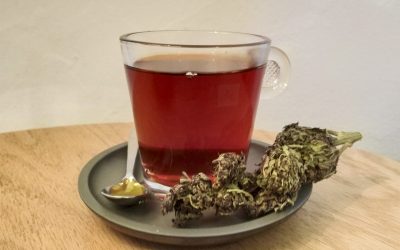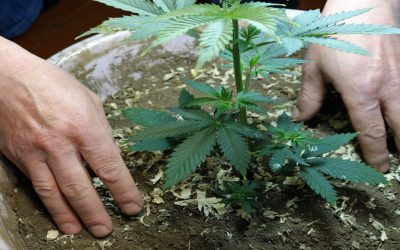What does cannabis look like? Navigating the realm of cannabis can be perplexing, particularly when it involves grasping various quantities and measurements. Gone are the days of straightforward terms like “dimebag” and “twenty-sack” – now, within the legalized cannabis industry, it’s easy to become entangled in the mix of metric and imperial systems. This guide is designed to simplify matters for you, whether you’re a newcomer to cannabis or simply seeking clarity.
The bewilderment often arises from how we conceptualize weight and mass, which can fluctuate depending on the size and density of the product. But fret not, you don’t need to be a mathematical genius to comprehend it all.
What does a gram of weed look like? Let’s dissect it:
- Gram: The smallest unit, typically equivalent to one medium-to-large bud or two smaller ones.
- Eighth: 3.5 grams, usually comprising several buds and often including the finest pieces.
- Quarter: 7 grams, adequate to comfortably fit in a sunglasses case.
- Half: 14 grams, enough to fill a standard resealable sandwich bag.
- Ounce: 28 grams, the maximum amount purchasable from adult-use dispensaries.
- Pound: 448 grams, a standard quantity primarily utilized by producers and seasoned dealers.
Understanding these measurements can ensure that you receive what you pay for and steer clear of any confusion in your cannabis transactions.
The Importance of Weed Measurements
It’s important to understand that these illustrations serve as approximate representations due to the varying density of cannabis among different plants, strains, and brands. Indica varieties typically yield denser buds on more robust plants, while sativas tend to produce longer, less compact buds. This diversity can be likened to the comparison between a pound of feathers and a pound of gold; despite weighing the same, a dense flower from the Cookies strain might appear smaller than a fluffier bud of Jack Herer.
Thankfully, cannabis companies are required to accurately measure the product before packaging and distribution, ensuring consistency. Even if the quantity in a jar or bag appears different, the scales provide an accurate assessment.
Furthermore, it’s essential to understand that the weight of cannabis buds includes non-smokable components such as stems and moisture. As the flower ages and dries, it loses weight, underscoring the importance of checking the package date when making a purchase.
A gram of cannabis flower differs in appearance from a gram of concentrates or cartridge oil. For detailed information on quantities beyond flower, it’s advisable to consult with your budtender.
Converting Ounces of Cannabis to Grams
Before the regulations accompanying the legalization of recreational cannabis, purchasing marijuana typically involved buying it in fractions, depending on individual preferences. One might have chosen an “eighth” (⅛ ounce) one week and a “quarter” (¼ ounce) the next. However, dispensaries now commonly sell cannabis in gram amounts. To help, here’s a straightforward guide for converting ounces of marijuana into grams.
The price of cannabis flower varies depending on factors such as product quality, market classification (medical or recreational), and the tax regulations in the specific state and county of purchase. Generally, prices range from $10 to $20 per gram of flower and from $25 to as much as $75 for an eighth. Some companies offer discounts for bulk purchases, and dispensaries often run promotions to address any price concerns.
Choosing Between Ounces and Grams for Weed
Under adult-use rules, people can usually buy up to one ounce of weed per day from a dispensary or delivery service. Though medical marijuana programs might have higher limits, many users rarely reach them.
For those after the smallest amount, licensed sellers offer cannabis flowers in one-gram portions. This is enough for roughly two personal-sized joints or three to four pipe or bong bowls, making it great for occasional users or those trying out new strains. The next common size is three and a half grams, known as an eighth, which makes about seven joints. Going up, seven grams (a quarter ounce) makes around 14 joints, while 14 grams (a half ounce) can make nearly 30 joints. So, a full ounce, equal to 28 grams, can roll nearly 60 joints or fill over 100 bowls.
It’s worth noting that pre-rolled joints are often sold in half-gram or full-gram amounts. Customers might go for a half gram of weed to share with a friend or a full gram for bigger gatherings.
Hip Names for Weed Amounts
Before dispensaries in legal and medical states established standardized weed measurements for purchasing cannabis within legal limits, people relied on visual cues and affordability when buying weed. This is where slang terms became essential. Even if you don’t plan on using them, enthusiasts have always crafted a unique language around their favorite purchase. Here are some popular slang terms for weed measurements, listed from smallest to largest:
- “G,” “gerb,” or “deag”: a gram of weed.
- Nickel bag: $5 worth of weed, usually around half a gram to 1 gram.
- Dimebag, dime, or dime sack: $10 worth of weed, typically half to 1 gram.
- Twenty-bag, dub sack, or dub: $20 worth of weed, usually 1 gram to 1.5 grams.
- Sixteenth or half-eighth: Half of an eighth, roughly 1.75 grams.
- Slice: Equivalent to one eighth of an ounce.
- Half-zip: Half an ounce, approximately 14 grams.
- Zip: One ounce of weed, equal to 28 grams.
- “QP” (pronounced as cue-pee): A quarter-pound of weed, or 4 oz.
- Pack: A pound of weed, named after the bags used for transportation.
Guaranteeing You Receive Value for Your Purchase
Before states required adult-use regulations including track and trace systems for all cannabis and its derivatives, many dispensaries operated in a deli-style manner. This allowed patients to tailor the amount of cannabis they purchased according to their budget, with the scales visible for transparency. However, with the current practice of pre-weighing and packaging cannabis before it reaches consumers, there’s a growing concern about receiving the correct amount.
If you’re concerned about receiving less than what you paid for, we strongly recommend investing in a scale. Once you’re at home, weigh the cannabis and compare it to the amount specified on the packaging. If there’s a discrepancy, we encourage you to return it to the dispensary or contact the delivery service, providing photographic evidence. Most companies are willing to replace products that are underweight without any hesitation.











0 Comments